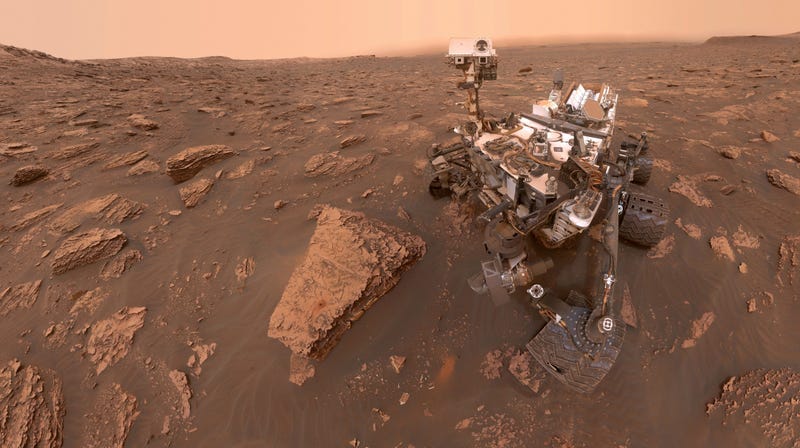
NASA’s Curiosity rover discovered “startlingly high amounts of methane in the Martian air” on Wednesday in what could potentially be a sign of life on the Red Planet, the New York Times reported on Saturday.
The detection of methane would be a major discovery because, as the Times noted, it breaks down within a few centuries due to sunlight and chemical reactions—meaning it would have had to have been generated quite recently in historical terms. High levels of methane could potentially be generated underground by microbes called methanogens that survive without oxygen and produce the gas as a metabolic byproduct. Project scientist Ashwin R. Vasavada told the Curiosity science team in an email that “Given this surprising result, we’ve reorganized the weekend to run a follow-up experiment,” the Times wrote.
The readings on Wednesday are over three times that of a sudden spike in 2013 that lasted several months; after first finding nothing after its touchdown in 2012, Curiosity detected approximately seven parts per billion of methane later in the year. The newest measurements are 21 parts per billion.
However, it is also possible that the Curiosity rover has simply detected pockets of methane leaking from deep under the surface, the Times wrote, and the readings are only preliminary. When methane was similarly detected on the surface of Mars in 2004, scientists said that the methane could also be generated by geothermal reactions involving water and heat, though the exact mechanism by which that could occur on Mars remained an open question. (Since then, research has suggested Mars may not be as geologically inert as previously thought.)
Advertisement
The Times wrote:
Curiosity scientists developed a technique that enabled the rover to detect even tinier amounts of methane with its existing tools. The gas seems to rise and fall with the red planet’s seasons. A new analysis of old Mars Express readings confirmed Curiosity’s 2013 findings. One day after Curiosity reported a spike of methane, the orbiter, passing over Curiosity’s location, also measured a spike.
But the Trace Gas Orbiter, a newer European spacecraft launched in 2016 with more sensitive instruments, did not detect any methane at all in its first batch of scientific observations last year.
Advertisement
National Institute for Astrophysics in Italy scientist Marco Giuranna, who handles methane measurements taken by the Mars Express orbiter, said that Mars Express, Curiosity, and Trace Gas Orbiter scientists were discussing the findings but that there remains “lot of data to be processed.”
The Curiosity rover has currently been diverted from its scheduled scientific work to do followup on the methane readings, according to the Times, with more data expected on Monday.
Advertisement
https://gizmodo.com/nasas-curiosity-rover-detects-spike-in-methane-on-mars-1835768013
2019-06-22 21:35:00Z
52780319240802
Bagikan Berita Ini














0 Response to "NASA's Curiosity Rover Detects Spike in Methane on Mars - Gizmodo"
Post a Comment